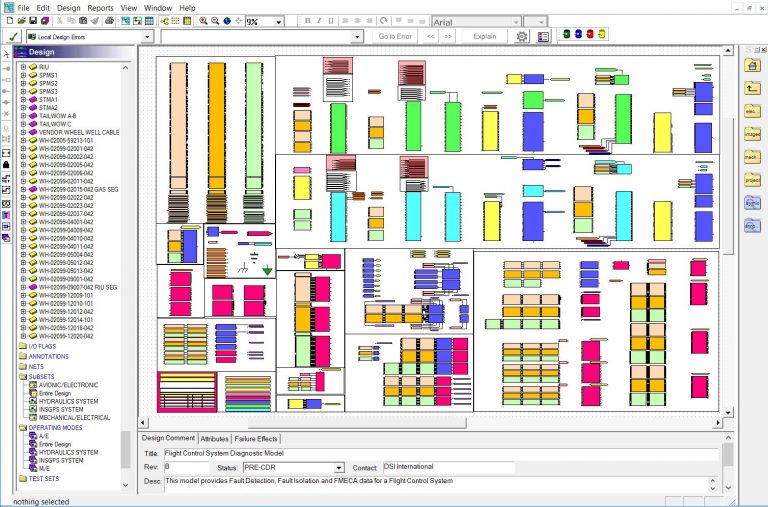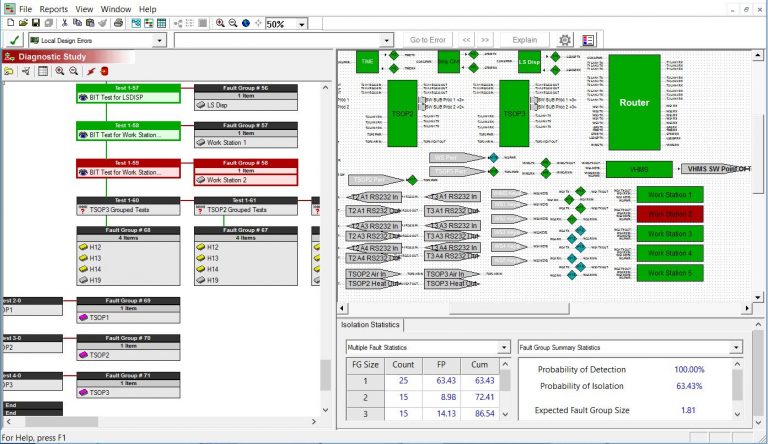

Products
eXpress
System Modeling for Diagnostic Design and Analysis
Award-winning system capture, diagnostic design influence and integration engineering tool.
eXpress is a comprehensive model-based diagnostics engineering software application providing an environment for the design, capture, integration, evaluation and optimization of complex or large-scale system diagnostics, prognostics health management (PHM), systems testability engineering, failure mode and effects analysis and system safety analysis. eXpress is uniquely suited to influence the diagnostic development for new designs or to exploit the diagnostic challenges of existing legacy systems. Its robust structure facilitates the capture of extensive interdisciplinary design knowledge providing an unmatched ability to corroborate, reuse and re-purpose expert knowledge in performing standardised testability, reliability and maintainability analyses.

As the only solution of its kind, eXpress provides enormous short and long-term cost-savings, realized throughout the entire life cycle.

eXpress System Modeling

eXpress Diagnostics
Product Overview
System Modeling
eXpress modeling provides a unique method of capturing the functional design of a system. System diagnostic designs are created by building a model of all testable and repairable components within the system. Functions are assigned to all components and then failure modes are added to describe how the components and their associated functions will fail.
Diagnostic Design and Analysis
eXpress diagnostics extends the modeling task by adding diagnostic relationships between the functions of the system components to provide a quick and accurate means of defining tests that fully represent what is learned diagnostically when a test is performed. The tests developed in the model are then used to develop both testability type diagnostics to meet system requirements of both the MIL-STD-2165 and the IEEE-1522 standards and to develop run-time diagnostics which can then be implemented in real-world troubleshooting environments.
Failure Mode Effect and Criticality Analysis (FMECA)
Failure modes in the model when mapped as causes of component failure effects which are in turn mapped as causes of intermediate or design failure effects create the local, next higher and end effects typically seen in a failure mode and effect analysis (FMEA – MIL-STD-1629A). A FMECA or failure mode effect and criticality analysis can then be created by adding the relative critically of each failure. The relative critically is an assessment of the critically of each failure as they are related to all failures within the system and is based upon the failure rate, failure severity and component duty cycle within the overall system operational time.
When attached to a diagnostic design created in eXpress the FMEA can provide details about whether the failure is detected and uniquely isolated, the size or contents of the expected fault group that the failure isolates to and the fault signature which is a list of all tests that would fail if the failure occurred.
Critical Safety Analysis using the Fault Tree Analysis (FTA)
Failure effects when added to the components and the design may can be added exclusively for the fault tree analysis (FTA) or reused from the failure mode and effect analysis (FMEA).
When attached to a diagnostic design created in eXpress the FTA can provide information about whether the critical failures in the system are detected and uniquely isolated by the diagnostics.
Prognostics when included with a diagnostic attached to the FTA can be used to determine how the prognostics when implemented will reduce the likelihood of occurrence of the critical failure.
Assessing the Impact of Prognostics
In addition to suggesting candidates for prognostics, eXpress can provide details about the overall effectiveness, the impact upon meeting the requirements of testability and the degree to which the likelihood of a critical failure will be reduce by the prognostics in the FTA analysis.
Maintenance Engineering
The results of the diagnostics in eXpress can be leveraged in eXpress to generate fault templates representing the fault groups in the diagnostic design. The fault templates are then used to automatically assign unique fault codes to each fault group, setup complex replacement metrics based upon order of replacement and taking into account opportunistic replacement. Finally, written replacement requirements and procedures may be attached to each fault template.
Maintainability Engineering
Analysis from both the diagnostic and FMEA design can be used to identify and reduce both the cost and time to diagnosis and repair failures. This includes identifying the fault groups with the largest impact upon your design for both cost and time. In addition, eXpress can assist in identify the best method of breaking up fault groups that have a large impact upon these measures by suggesting test points or candidates.
The diagnostic design from eXpress may also be exported to STAGE for use in simulating the cost and time to diagnosis and repair the system for the designed diagnostics when deployed to a real-world troubleshooting environment.


